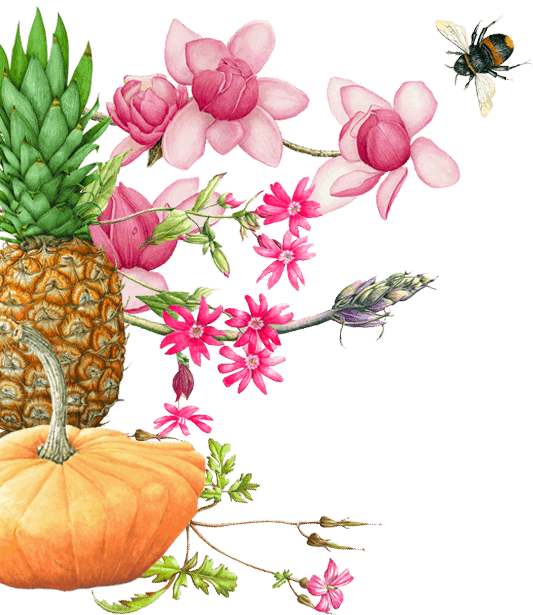Soil at Heligan
At Heligan we take soil seriously. Food production is at the core of what we do, from the Kitchen Garden to Home Farm, so the nutritional connections between soil, plants and people are never far from our minds. We are constantly learning.
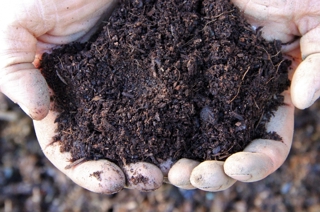
No dig gardening?
Across the world, soil consciousness is growing and in gardens this is particularly evident in the No Dig approach, brilliantly championed in the UK by Charles Dowding.
No Dig gardening recognises how cultivation can hugely disrupt soil biology and the circular economy between microbes, mycorrhizae and plants that it powers. No Dig is also less work!
Over the last twenty years, our community of horticulturalists, gardeners and visitors are developing a more informed and more impassioned understanding of soil. So we'd like to share a bit more about where we are in our journey, what we do across the gardens and estate, and why.

The Productive Gardens
The first part of the garden at Heligan to be restored was the Productive Gardens, made up of the Melon Yard, the Kitchen Garden and the Flower Garden. The restoration was centred around a celebration of the skills of late Victorian head gardeners, honouring their knowledge and expertise, as well as the sweat and toil of the other gardeners to produce a constant bounty of fruit and vegetables for Heligan House and the Tremayne family. This entails a high degree of horticultural skill as well as a lot of hard work. Traditional horticultural techniques are used alongside heritage varieties of fruit and vegetables.
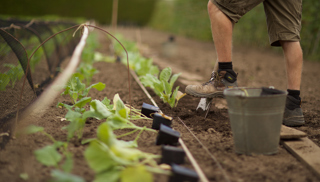
The Kitchen Garden
The Kitchen Garden is run on a rotational system and each of its annual vegetable plots are double dug once every five years. This typical 19th century method involves a hefty application of organic matter at depth – pretty much a barrow of well-rotted manure every square metre. In the rotation’s subsequent years, there may be some light tillage depending on the crop. For example, pumpkins and squashes each have an individual planting hole, with extra organic matter, while the onion bed is lightly forked over before a generous mulch of seaweed is applied in the autumn.

Living history held in our soil
While double digging represents a disruption to the soil this is balanced by the hearty addition of manure, feeding the disturbed biology and soil structure.
The Productive Garden soil is a living record of two centuries of cultivation. Step outside of the two acres of Kitchen and Flower Gardens and the soil is very different, both in structure and texture. From the early 1800s, year after year, the actions of gardeners, spades and manures have transformed the Productive Garden soil, despite the gardens being lost for decades. Even in the past thirty years, we know the annual rota of organic matter and double digging holds a value beyond historic record. We're awaiting funding to take part in an international project investigating soil carbon sequestration, based upon the historic legacy of our soil.
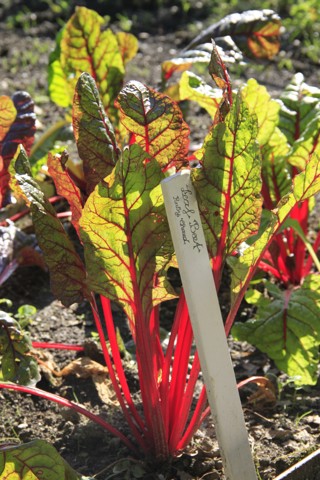
ReCon Soil with University of Plymouth and Eden Project
Currently in the Kitchen Garden we have two ongoing soil research projects. The first is with the University of Plymouth and The Eden Project to look at different soil cultivation techniques and to understand the impact that different soil types (including ReCon soil - which is a reconstructed soil) has on the plants grown in it. Across 4 different plots (double digging, no dig, lightly dug with compost, ReCon soil) we have planted Fordhook Giant chard, and plants from each patch are tested for nutrient density throughout the year.

Innovative Farmers Project - compost fertility
The second project is a two-part programme with Innovative Farmers, investigating the fertility of our compost and the survival of weed seeds, roots and pathogens through the composting process.
We’ve treated the soil in nine plots, three different ways: unmulched; light mulch of Heligan compost; heavy mulch of Heligan compost. Results will be assessed by a comparison of crops’ pest and disease damage, the quality of produce on picking and nutrient density through Brix testing of sucrose content.
By working with our partners on this project, the hope is that we will have beautiful compost that is weed and disease free.
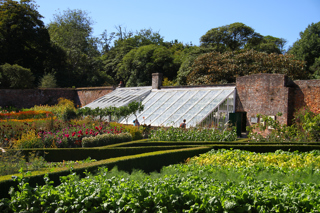
The Flower Garden
Within the Productive Garden, it is in the Flower Garden that we are experimenting the most with cultivation techniques. Apart from the potatoes, the beds in front of the Peach House have just been mulched with no tillage. Any direct sown beds have had the compost sieved before applying. The “step-over” beds and small box beds are No Dig, while the beds around the Dipping Pool were lightly forked and mulched. The cut-flower beds are double-dug every six years as the perennials and annuals swap beds every three years.
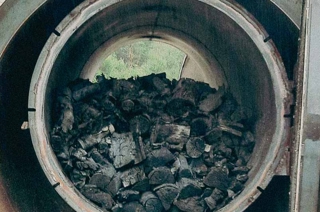
Heligan Charcoal
In terms of soil improvement, Heligan Estate has been working on developing its own biochar from Heligan wood using our own retort kiln. Biochar helps with moisture retention, provides habitat for soil biology and roots as well as sequestering carbon.
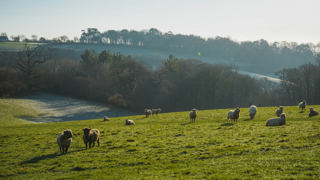
Farm Net Zero
Over the past few years, we have been part of the Soil Carbon Project and Farm Net Zero, both of which increased our understanding of Heligan’s soils. This year we will be carrying out an estate-wide soil baseline test, which is based on taking two samples (0-15cm / 15-30cm depths) every hectare over the full farm platform, looking into the basic chemistry and soil organic matter. These will be put on maps and will act as the nutrient and soil organic matter baseline. There will also be composite soil Solvita tests which will give an excellent insight into the soil trace elements and a good indication of the levels of soil biology and available nitrogen.

Home Farm and Heligan Estate
For the past few years, we have adopted a mob grazing system for our flerd, the focus of which is soil health, animal health and carbon sequestration. For more information please see our film about regenerative agriculture and the farm. No chemical fertilisers or herbicides are used.
This year the one area of cultivation has been Valentine’s for the sowing of emmer wheat and clover, as well as the re-establishment of our cornfield annual wildflowers. Post-harvest, the field is grazed over the winter by the flerd to replace any loss of carbon and organic matter.
Want to find out more?
If you've got other questions about soil and digging at Heligan, please send us an email.

